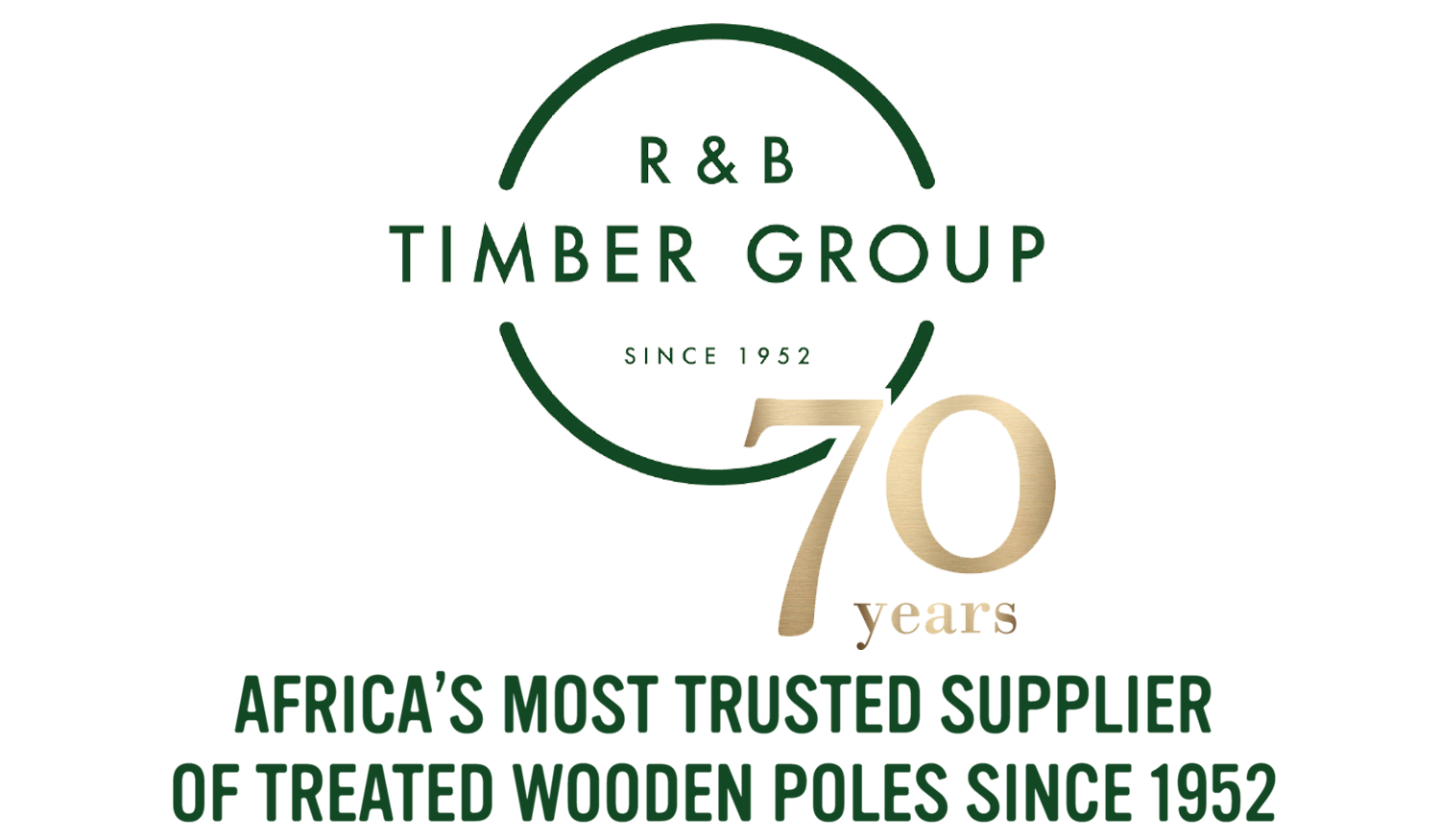UTILITY POLES
Utility Poles, also known as transmission poles, support overhead power lines and various other public utilities, such as cable, fibre optic cables, and related equipment such as transformers and street lights. It can be referred to as a transmission pole, telephone pole, telecommunication pole, power pole, hydro pole, telegraph pole, or telegraph post, depending on its application.
R&B Group produces specially-treated timber utility poles designed to fulfil a variety of functions. Our utility poles are manufactured under ISO9001:2015 certification, and under stringent SANS754 quality controls. As a customer, you can rest assured of our quality meeting the highest possible standard.
TIMBER UTILITY POLES IN CONTACT WITH THE GROUND
Timber utility poles that are in contact with the ground will need to be specially treated in order to ensure their longevity.
Specifically, utility poles in contact with the ground are H4 treated to a SANS 754 standard, while the cross arms will require an H3 treatment as in the case of the latter, there is no ground contact.
TIMBER UTILITY POLES FOR TELECOMMUNICATION
Many South Africans are familiar with the sight of treated wooden transmission poles that relay power from Eskom’s stations to municipal electricity grids - however, a new innovative use for treated timber is to build above-ground telecommunication networks which obviate the need for network providers to trench cables underground.
Smaller telecommunication stations may be placed on timber poles using specialised mounting and cabling junctions depending on their purpose. Older ADSL networks or other copper infrastructure can additionally be mounted above-ground - many smaller community networks and other telecommunication providers have found this method to be far more affordable and easy to deconstruct should their use be only temporary.
TIMBER UTILITY POLES FOR FIBER
Fibre-optic networks are traditionally trenched underground - and in South Africa, municipal agreement traditionally only allows one or two network operators to share trenches - meaning that as newer providers enter the market, they are faced with the need to trench their own networks.
Above-ground networks can instead be constructed using treated timber, meaning that network operators can easily bypass the expense of needing to trench or relay their networks below ground. In fact, constructing above-ground telecommunications networks above treated timber poles allows providers to easily access new or difficult terrain and relay their network easily - especially to double or triple storey developments.
Treated timber poles have been used in a variety of religious around the globe given their longevity and endurance - delivering fibre connectivity to regions as far afield as rural West Africa.
UTILITY POLE SIZES
All R&B Timber Group utility poles come in the following popular sizes:
Length 8m – 18m. Top Diameter: 120mm – 240mm. Other specifications are available on request
CUSTOM UTILITY POLE ORDERS
R&B Timber Group can also custom any large utility pole orders with the following:
Gang-Nail
Drilling
Pole Caps
Wire Binding
Labelling
Colour Coding
Peeling
UTILITY POLES DELIVERED THROUGHOUT AFRICA
The R&B Timber Group specializes in the manufacturing of large scale orders and export of utility poles throughout Africa, and globally. Our easy access to the Durban port in Kwa-Zulu Natal makes shipping utility poles to any destination simple.
Transmission poles at dusk
Durable treated wooden transmission pole during thunderstorm
Treated utility poles
Electricity supply running through treated utility pole

